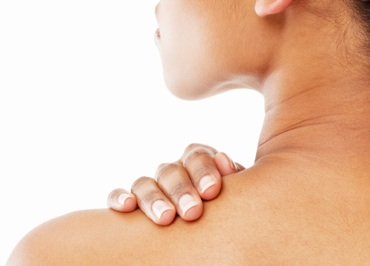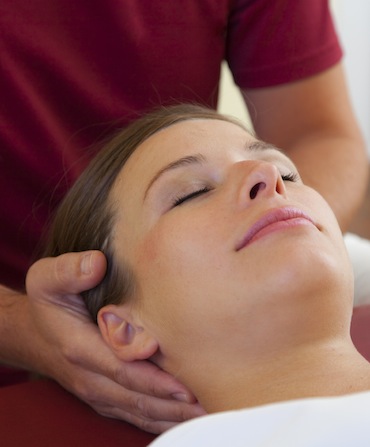A Holistic Approach to Osteopathy
 Everyone does things just a little differently. Within manual medicine there are many ways to do things and Osteopathy is but one way. Of course Osteopathy, being some 160 years old, now has many of it’s own styles.
Everyone does things just a little differently. Within manual medicine there are many ways to do things and Osteopathy is but one way. Of course Osteopathy, being some 160 years old, now has many of it’s own styles.
Actually that would be many styles outwardly and inwardly. Emergent variance outwardly, which you might see in terms of different techniques or procedures. Though Osteopathy also expands inwardly, into different philosophies and different mindscapes. In all of this we are comfortable. After all the exploration of Consciousness is both external and internal. (Wink.)
This is Osteo Plus and this is our approach to Osteopathy.
Structural Osteopathy
Osteopathy has changed so much to become the discipline that it is today. It is now practiced in many different ways by many different practitioners. For many the term Osteopathy is still “new”. Though for Osteopaths sufficient time has passed for us to now use different terms to distinguish between the different styles of Osteopathy in use.

For the most part Osteopathy as a term describes a philosophy. Osteopaths have a set of rules that describe how we understand the body to work. The interpretation of these rules changes with the passing decades. We update our exact philosophy as more information and scientific research becomes available. Though in the last 160 years no new discoveries have taken us far from that early knowledge, discovered through hands-on experience, that forms our core Osteopathic principles.
The most common style in Osteopathy concerns itself with the structural form of the body and how it moves and resists external forces such as gravity. It describes the body in terms of levers and mechanics. It considers key structures such as bone, joint, ligament, muscle etc. Structures that can be seen and felt, or dissected and examined.
As Osteopaths we know this style as Structural or Mechanical or Orthodox Osteopathy. World wide this is the most commonly used style.
Practitioners in this style look for a mechanical cause of pain or disability.
Treatments to alter the body’s function mechanically have an obvious form. Such therapies target bones and joints and muscles using an obvious physical input such as massage, tissue stretching or joint manipulation. Such interactions are designed to physically change structural elements of the body to improve functions such as elasticity or muscle tone or range of motion.
Such problems are primarily seen to have a physical or mechanical cause. Causes such as sports activities, lifting injuries, workplace or ergonomic strain from overuse of recurrent patterns or postures.
Cranial Osteopathy
One of the more subtle styles of Osteopathy is termed Cranial Osteopathy. It is an example of a less direct and less physical approach to Osteopathy.
 Cranial Osteopathy earned its name from the observations of practitioners in which a subtle relationship was felt to exist between the function of the cranium and the function of the sacrum in the pelvis. Techniques were discovered to interact with this relationship that became known as the cranio-sacral mechanism. This mechanism is also known to other practitioners who have not studied Osteopathy.
Cranial Osteopathy earned its name from the observations of practitioners in which a subtle relationship was felt to exist between the function of the cranium and the function of the sacrum in the pelvis. Techniques were discovered to interact with this relationship that became known as the cranio-sacral mechanism. This mechanism is also known to other practitioners who have not studied Osteopathy.
Cranial Osteopathy is the practice of interacting with the cranio-sacral mechanism while adhering to the philosophy of Osteopathy.
The exact nature of the cranio-sacral mechanism is not understood. Over the last 160 years Osteopaths have attempted to provide many explanations and theories to explain the treatment benefits reported when using Cranial Osteopathy. However current research has still not provided any convincing evidence as to the true nature of this phenomenon, though it has debunked many of the theories put forward so far.
So is Cranial Osteopathy beyond science or just plain unscientific?
“What is apparent though is that built into all of us is the provision for adaptability at every tissue level. This we do see with modern science in every cell. Special attention is given to neural plasticity that provides dynamic functional change in cell structure measured in changes per millisecond. In many ways health can be measured as an index of potential for adaptation. As such poor health can be seen as a failure of an organism to effectively alter or adapt to its internal or external environment.” says Hedley Chinn
Osteopaths using the Cranial Osteopathy approach believe that during our earliest development the cranium keeps open tiny interlocking sutures throughout the cranial bones so that it may grow and adapt to ever changing internal forces. It seems apparent to the Osteopath (but is yet to be shown in the science laboratory) that slight defects occur in the adaptability of these tiny systems. Defects that have a knock on effect to change larger health systems locally or remotely through chemical and neural disturbance perhaps. Cranial osteopaths propose that “strain” occurs when these tiny systems are exposed to force or trauma. These “strains” are much like a fibre in spasm in a muscle that alters function of the whole limb by being painful, except in the cranio-sacral system these strains occur in more loosely defined tissues such as osseous membrane, ligament or fascia and can cause subtle changes over large areas by altering reflexes and other control mechanism that are part of a healthy regulated homeostasis. And a homeostasis is a fantastic name for the idea that something can be kept in a steady balance while everything is changing constantly.
Whatever the mechanism for strain in the cranio-sacral system Osteopaths, and others, have reported ways to restore good adaptability where it has been reduced and when it is producing poor health. Although many patients report health benefits in this way it would be prudent to remember that their experiences are not supported by scientific research.
Cranial osteopaths use a very gentle approach. So gentle in fact that it is also called a “subtle” or “indirect” approach. To explain their approach cranial osteopaths use concepts similar to describing fluid mechanics. Such that things are “brought back to balance”. “Normal dynamics are restored”. “Reflexes were normalised”
Appointments using Cranial Osteopathy are quiet and relaxing and peaceful. They can be used just a few moments after birth. Such approaches are commonly used in babies and children where their cranio-sacral system is said to be more dynamic and more prone to change, and requiring more “instruction” in cases of strain. It is also commonly seen in the care of headaches, sinusitis, ear-ache and in protocols for restoring jaw mechanics and good dental health. At this point we remind the reader again that the reported health benefits seen with the use of cranial osteopathy are not supported by scientific research. It remains possible that the reported health benefits are due to faith and trust in ones practitioner, and relate more to the rapport with the Osteopath than they relate to direct medicinal change.
